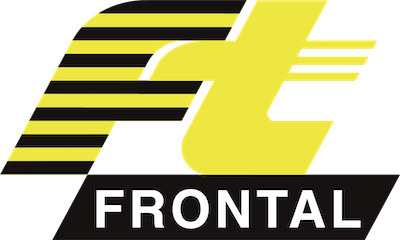Aluminum alloys are divided into casting and forming alloys
I. Casting aluminum alloys
The main components of foundry aluminum alloys are: silicon, copper, magnesium, and in some alloys there are also manganese, nickel and titanium. Aluminum alloys with a high silicon content are most widely used. The silicon content in foundry aluminum alloys is 0.8÷23% Si. AlSi21CuNi alloy, also known as silusil, contains 20÷23% silicon, 1.1÷1.5% copper, 0.5÷0.9% magnesium, 0.1÷0.3% manganese, 0.8÷ 1.1% nickel and is used for castings of highly loaded internal combustion engine pistons. It is basically pressure cast.
Aluminum alloys containing 10÷13% silicon are called silumins. Typical silumins are AlSi11 and AlSi3Mg1CuNi alloys. The first one contains 10÷13% Si and is used for casting parts with complex shapes, medium loads, operating at elevated temperatures and resistant to corrosion even in sea water. It has good strength properties and good weldability. The AlSil3MglCuNi alloy contains 11.5÷13% Si, 0.8÷1.5% Cu, 0.8÷1.5% Mg and 0.8÷1.3% Ni and is used for casting pistons of internal combustion engines.
Aluminum-copper alloys have good casting properties and corrosion resistance, but are prone to hot cracking. The AlCu4 alloy contains 4 +5% Cu and is used for tableware and castings requiring good castability and plasticity. The AlCu4TiMg alloy contains 4.2÷5% Cu, 0.15÷0.4 Mg, 0.15÷0.30 Ti and is used for castings of automotive parts and for medium and highly loaded castings for the machinery industry. Aluminum-magnesium alloys, such as AlMg10 and AlMgSi1, are used for castings with high corrosion resistance.
II. Aluminum alloys for forming
These alloys have a percentage of lower alloy additions than aluminum casting alloys. This is due to the fact that large amounts of alloy additions deteriorate the plastic properties of the alloy. The main components of aluminum alloys for forming are: magnesium, copper, manganese, silicon and, to a lesser extent, also nickel, iron, zinc, chromium and titanium.
Aluminum and magnesium alloys are characterized by good resistance to corrosion and sea water. AlMg1 alloy containing 0.74÷1.2% Mg is suitable for cold and hot forming; It is particularly amenable to deep drawing and welding. It is used for die-forged and stamped parts, for equipment parts in the chemical and food industries. AlMg4.5Mn alloy contains 4÷4.9% Mg and 0.4÷1% Mn; it is used for cold and hot forming. As a corrosion-resistant alloy, it is suitable for loaded ship structures and the chemical industry.
This alloy and AlMg2 and AlMg5 alloys are called hydronalium. Avial alloys – AlMg1SiCu and AlMg1Si – are used to produce medium-loaded elements of aircraft structures, motor vehicles, deep-drawn parts and parts with complex shapes forged in dies.
Aluminum alloys with copper and magnesium, and partly also with manganese and silicon, are characterized by high plastic resistance during cold and hot working. These alloys are primarily used for aircraft structures. Multi-component alloys, called durals, are widely used in industry. These include AlCu4Mg, AlCu4Mg1A, AlCu4Mg and AlCu4M1 alloys, used for rivets for aircraft structures, loaded elements of aircraft structures and motor vehicles, and structural building elements. Duralumin is highly resistant to corrosion and after hardening as a result of heat treatment, it obtains significant strength (29÷440 MPa).
For parts operating at high temperatures up to 300°C, especially in aircraft structures, alloys with the addition of iron and nickel are used, i.e. AlCu2Mg2NiSi and AlCu2Mg2Ni1. They are suitable for hot forming, and especially for forging in dies.
Alloys with the addition of zinc – AlZn6Mg2Cu and AlZn5Mg1 – are used for highly loaded elements of various structures, especially aircraft ones.
According to PN-EN 573-3:2005, 17 grades of aluminum are produced with varying degrees of purity from 99.0 to 99.99% Al. The marking consists of a sequence of letters and a number specifying the aluminum content in %, and sometimes the chemical symbol of the element constituting the main admixture is added at the end, e.g. EN AW-A199.5Ti. EN means coding based on chemical symbols, A – aluminum, W – products and ingots for plastic processing, 99.5 – pure Al content in %, Ti – symbol of the element (titanium) constituting a distinguished admixture. Aluminum grades used in the electrical industry are additionally marked with the letter E, e.g. EN AW-EA199.7.
A distinction is made between aluminum alloys for forming (PN-EN 573-3:2005) and foundry alloys (PN-EN 1706:2001). He calls it light feet. Most often, the main alloying elements are: copper, silicon, magnesium, manganese and zinc. Similar to steel, Al alloys are marked with symbols and numbers.
The PN-EN 573-1:2006 standard applies to aluminum and its alloys in terms of: chemical composition, type of plastically processed products and the four-digit system of numerical markings XXXX. The first digit may indicate unalloyed aluminum or a specific group of aluminum alloys characterized by the main alloying element (with the highest percentage content). The alloy groups identified by the first digit are as follows:
- 1xxx – unalloyed aluminum, containing 99.0% Al and more – group 1000.
The remaining alloy groups contain the following main alloy components:
- 2xxx – copper Cu – alloy group 2000,
- 3xxx – manganese Mn – alloy group 3000,
- 4xxx – silicon Si – alloy group 4000,
- 5xxx – magnesium Mg – alloy group 5000,
- 6xxx – magnesium and silicon Mg2Si – alloy group 6000,
- 7xxx – zinc Zn – alloy group 7000,
- 8xxx – other elements – alloy group 8000,
- 9xxx – not used – alloy group 9000 (future use).
The second digit in the xXxx designation indicates aluminum modifications. The value 0 means no modification, while the numbers from 1 to 9 mean modification of aluminum according to the limits of the arithmetic average content of alloying elements in pure aluminum. The last two digits xxXX in the 1000 group indicate the percentage of pure aluminum. In the remaining groups they have no special meaning, but only identify different aluminum alloys in given groups.
The PN-EN 573-3:2005 standard contains a system of markings for aluminum and its alloys based on chemical symbols. Examples of markings for unalloyed aluminum: EN AW-1199 [Al 99.99], EN AW-1070 [Al 99.7], EN AW-1100 [Al 0Cu] (contains a small addition of Cu). Examples of marking aluminum alloys for wrought processing (symbol W): EN AW-5251 [Al Mg2], EN AW-60630 [Al Mg0.7Si], EN AW-7075 [Al Zn5.5MgCu], EN AW-3005 [Al MnlMg0 ,5]. It is allowed to omit square brackets and use symbolic or digital markings, e.g. EN AW-AlMg4Mn or only 5083 (PA13 according to PN), EN AW-AlMg1SilMn0.6 or 6082 (PA4 according to PN), EN AW-AlCu4Mg2 or 2024 (PA7 according to PN). PN). The percentage composition of the basic alloying elements expresses the average content of the range, rounded to the nearest whole number or 5/10, and for contents < 1% to 1/10%. For several alloy additions, their symbols are placed in the order of decreasing element content.
The PN-EN 1706:2001 standard provides markings of heat treatment processes for products. They are as follows:
- F – manufactured product,
- O – annealed product,
- Tl – product cooled from elevated temperature and naturally aged,
- T4 – supersaturated product and naturally aged if necessary,
- T5 – product cooled from elevated temperature and artificially aged,
- T6 – supersaturated and artificially aged product,
- T64 – supersaturated product and artificially aged at the temperature of the basic state,
- T7 – supersaturated and artificially aged (stabilized) product.
Casting alloys are characterized by the letter C in their designation, e.g. EN AC-AlCu4MgTi, EN AC 2100 and EN AC-AlSi11 (AK11 according to PN), EN AC-AlMg7 (AK7 according to PN), EN AC-AlSi6Cu4 (AK64 according to PN), ( ~EN AC-AlSi5Cu1Mg approximately corresponds to the composition of silumin marked according to PN as AK51).
Not all aluminum alloys used in Poland have their equivalents in PN-EN standards, although the number of different types of aluminum alloys included in them is very large.
Prepared on the basis of KOWEZIU materials. https://strefainzyniera.pl/artykul/1234/aluminium-i-jego-stopy

